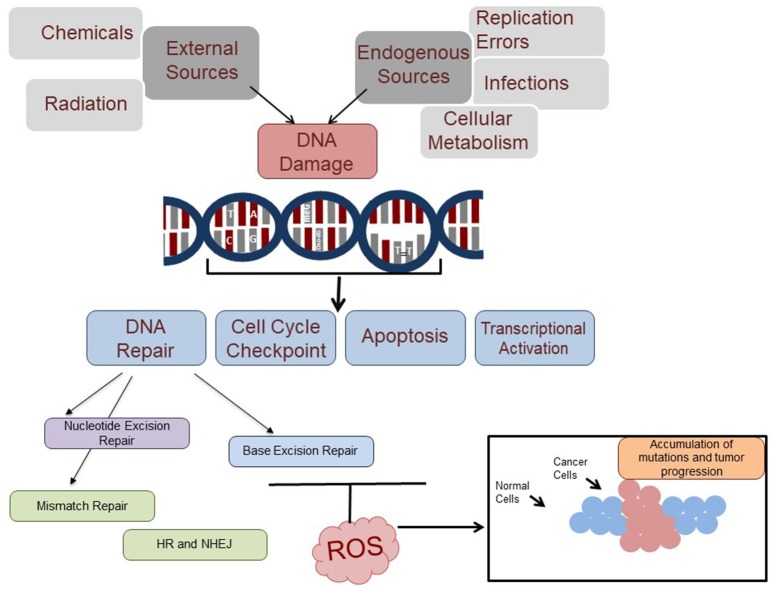Figure 1.
DNA damage response and the potential role of ROS in inhibition of DNA repair. DNA damage is induced by external (various environmental pollutants, chemicals, and radiation), and internal resources (infection, cellular metabolism and replication errors). These DNA damages affect the cell cycle check point, apoptosis, transcriptional activation and cancer. Part of the DNA damages (DNA base adducts, mismatch bases, damaged bases, and double strand breaks) are repaired by the nucleotide excision repair, mismatch repair, base excision repair, and homologous recombination (HR) and non-homologous end joining (NHEJ) pathways, respectively. Many of the DNA damages are ROS-induced and recognized by the BER pathway which excises and repairs the lesions. However, ROS may potentially inhibit repair through down-regulation of certain initial proteins in the BER pathway, which can cause a buildup of carcinogenic mutations and ultimately lead to tumor progression.

